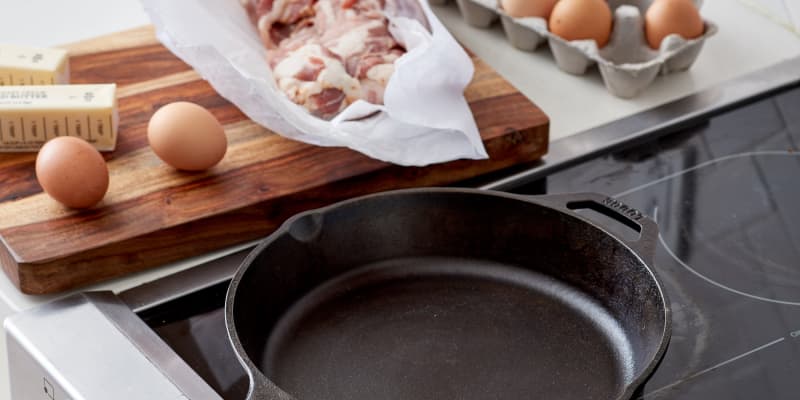Using cast iron cookware on induction cooktops has become increasingly popular due to its efficiency and effectiveness in cooking. However, many people wonder, ‘Do I need to re-season cast iron after induction use?’ The answer is nuanced, and understanding the dynamics of cast iron and induction can help clarify this.

Understanding Cast Iron and Induction
Cast iron is known for its heat retention and even cooking, making it a favorite among chefs and home cooks alike. Induction cooktops use electromagnetic fields to heat cookware directly, offering fast and precise temperature control. This modern technology works beautifully with cast iron because of its magnetic properties.
How Induction Affects Cast Iron
When cooking with cast iron on an induction cooktop, the heat is generated directly in the pan, leading to faster heating and cooling. This can affect the seasoning of the pan, as the high temperatures might wear down the existing layer of seasoning faster than traditional methods. To maintain optimal cooking performance, frequent re-seasoning might be necessary.
What is Seasoning?
Seasoning is the process of applying a layer of oil to the surface of the cast iron and heating it until it forms a protective coating. This not only prevents rust but also creates a natural non-stick surface, enhancing the cooking experience.
Why Re-seasoning Might Be Necessary
Using cast iron on induction can sometimes lead to uneven heating, which might cause the seasoning layer to wear off in spots. This is particularly true if the pan is not centered on the cooktop. Re-seasoning helps restore the non-stick surface and protects the pan from rust.Uneven browning is a common issue that can arise from such circumstances.
Steps to Re-season Cast Iron
To re-season your cast iron pan, follow these simple steps:
1. Clean the Pan
Start by cleaning your cast iron thoroughly. Use warm water and a mild soap if necessary. Scrub gently to remove any food particles or residues.
2. Dry Completely
After cleaning, ensure the pan is completely dry. You can use a towel or place it on the stove over low heat to evaporate any remaining moisture.
3. Apply Oil
Apply a thin layer of oil to the entire surface of the pan, including the handle and exterior. Use oils with high smoke points, such as flaxseed or vegetable oil, for best results.
4. Heat the Pan
Place the pan upside down in an oven preheated to 375F (190C). Bake for about an hour. This allows the oil to polymerize, forming a hard, protective layer.
5. Cool and Store
Let the pan cool in the oven before removing it. Once cool, store your cast iron in a dry place to prevent rust.Video guide on seasoning can be helpful.
Benefits of Re-seasoning
Regular re-seasoning ensures that your cast iron performs at its best. It enhances the non-stick capabilities, making cooking and cleaning easier. Additionally, it prolongs the life of the cookware, ensuring it remains a staple in your kitchen for years to come.
Impact on Cooking
Properly seasoned cast iron provides a superior cooking experience, allowing for even heat distribution and excellent food release. This is particularly important when using induction cooktops, as the precise temperature control can be leveraged to achieve perfect cooking results.
Common Issues with Cast Iron on Induction
While using cast iron on induction is generally beneficial, there are some common issues to be aware of. Cold spots can occur if the pan is not properly centered on the cooktop, leading to uneven cooking.
What to Watch Out For
Watch for signs of wear in your pan’s seasoning, such as sticking or rust. Address these issues promptly by re-seasoning to maintain your pan’s performance.
Conclusion
In conclusion, while using cast iron on induction cooktops is a match made in culinary heaven, it does require some maintenance. Regularly re-seasoning your cast iron will ensure it remains in top condition, providing excellent cooking performance and durability. Embrace the benefits of both cast iron and induction technology by keeping your cookware well-seasoned and ready for any cooking challenge.

FAQs
1. Can I use soap when cleaning cast iron?
Yes, using a mild soap is acceptable when cleaning cast iron, as long as you re-season the pan afterward.
2. How often should I re-season my cast iron?
Re-season your cast iron as needed, particularly if you notice food sticking or any signs of rust.
3. Are there alternatives to oven seasoning?
Yes, stove-top seasoning is an alternative method where the oil is applied, and the pan is heated on the stove instead of in the oven.
This article contains affiliate links. We may earn a commission at no extra cost to you.

